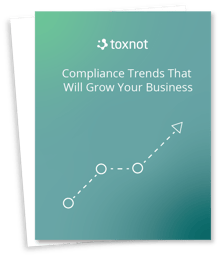When it comes to product compliance two regulations that continue to stand out for our users are both EU REACH and SCIP (Substances of Concern In Products). While there may be some relation between the two, it's important to understand how they vary and what that means when it comes to managing your company's product compliance.
What is REACH?
EU REACH is a European regulation that stands for Registration, Evaluation, Authorization and Restriction of Chemicals and is overseen by the European Commission. This regulation was established in 2007 and was created to replace previous legislation for toxic chemicals within the EU. The goal of EU REACH is to ensure a high level of protection for human health and the environment while also promoting alternative test methods and the free circulation of substances to further boost innovation. In short, REACH is the overall regulation that oversees chemical management in the EU.
This standard is one of the first of its kind to shift the responsibility of risk management from public authorities directly to the industries themselves. The industries and manufacturers are now required to assess and manage the exposure risks presented by toxic chemicals while also providing appropriate safety information to consumers. All manufacturers that import or distribute products in the EU are required to screen their products against the REACH Substances of Very High Concern (SVHC) list and disclose that information to the overseeing bodies.
What is SCIP?
SCIP is a database for information on Substances of Concern In Products (SCIP) and is part of the Waste Framework Directive (WFD). WFD, like REACH, is a European Union (EU) piece of legislation that creates a structure in which manufactured products are managed and reported. The WFD addresses the adverse impacts of waste generation on the environment and human health to improve the efficient use of resources to promote the transition to a circular economy. The SCIP database, as part of this effort, has three main objectives:
- Decrease the generation of waste containing substances of concern under REACH
- Make information available to those upstream in the supply chain and for consumers to improve waste handling operations
- Allow authorities to monitor and provide insight into product lifecycles, and ultimately initiate appropriate actions for pursuing the goal towards a circular economy
You can read more about SCIP here.
What are the commonalities between the two?
REACH and SCIP can sometimes be difficult to differentiate because of their similarities and overlapping requirements – it’s important to understand these commonalities.
REACH and SCIP are both overseen by ECHA, the European Chemicals Agency. This means companies will report to ECHA for both, but under different circumstances with different information. Additionally, both REACH and SCIP are specifically screening for chemicals on the Substances of Very High Concern (SVHC) list. This list is maintained by ECHA and updated twice a year; it currently contains over 300 substances that have high hazard ratings. Related to SVHCs, both of these regulations require reporting for products that contain SVHCs are imported or sold on the EU Market.
What are the key differences?
In addition to the similarities, it’s just as important to understand what sets the REACH and SCIP regulations apart for accurate reporting and compliance. Here is a breakdown of those differences.
REACH
- REACH aims to improve the protection of consumers and the environment while encouraging businesses to find safer alternatives to harmful chemicals.
- There is no formal declaration template. Providing documentation can be submitted as declarations, SDS, certificates, test reports, etc.
- A single declaration per product is required only when importing substances in a quantities that exceed one metric ton per year
SCIP
- SCIP Aims to help hazardous waste operators better process treatments and disposal to further the EU's circular economy goal
- The declaration standards are much more complex and regulated for SCIP. Substance data, concentration ranges, material identification, TARIC codes, and more are all required for a successful submission to the SCIP database
- SCIP requires reporting of products, as well as the individual containing articles that make up the product. This is significantly more data than a REACH submission would require.
How can Toxnot (by 3E) Help?
Toxnot allows manufacturers to store product data down to the article level, where all the required fields for a successful SCIP submission can also be added or imported. Once all SCIP data is collected and added, Toxnot can automatically submit data to the SCIP database. This allows manufacturers to submit data with just a few clicks – a world of difference for what would otherwise be a manual and time-consuming process.
If you’d like to know more about how we can help transform your compliance and SCIP submission process, book some time with us now!
Interested in discovering even more insight on product compliance?
Learn about the differences and similarities between California Prop 65 and EU REACH.. Additionally, our compliance trends download shares how to help you drive major changes in your approach to product compliance.



